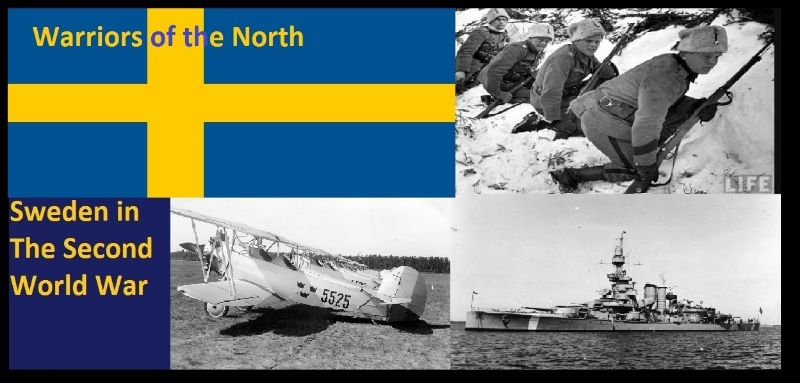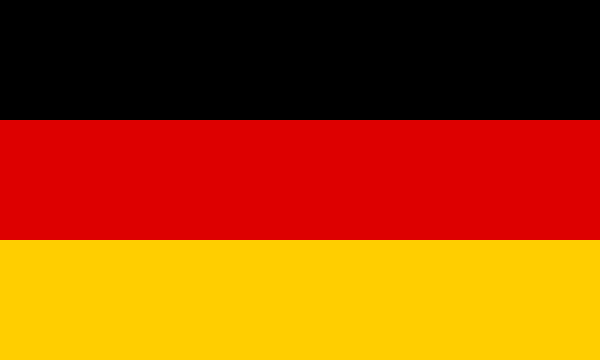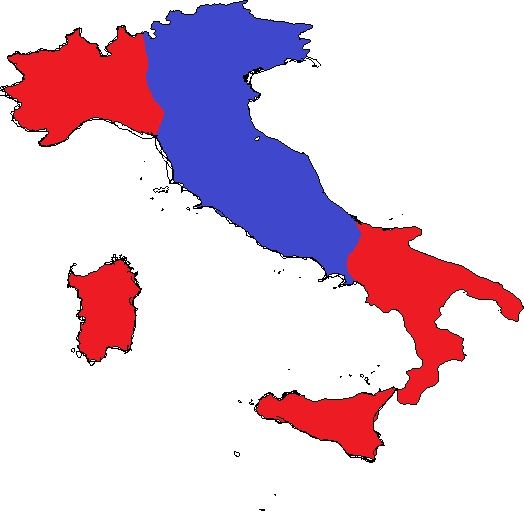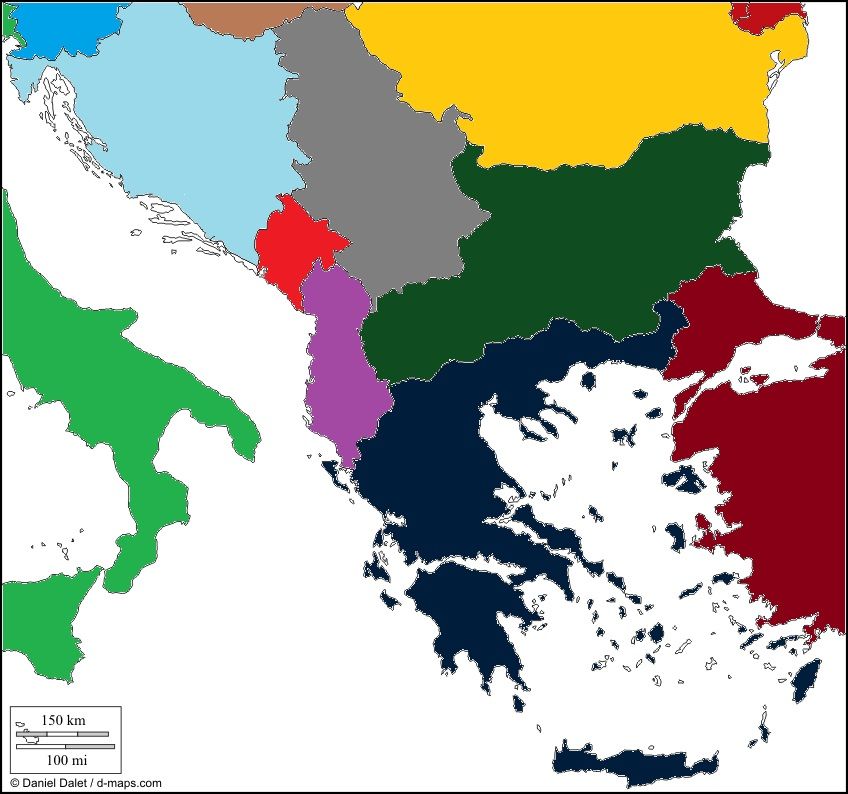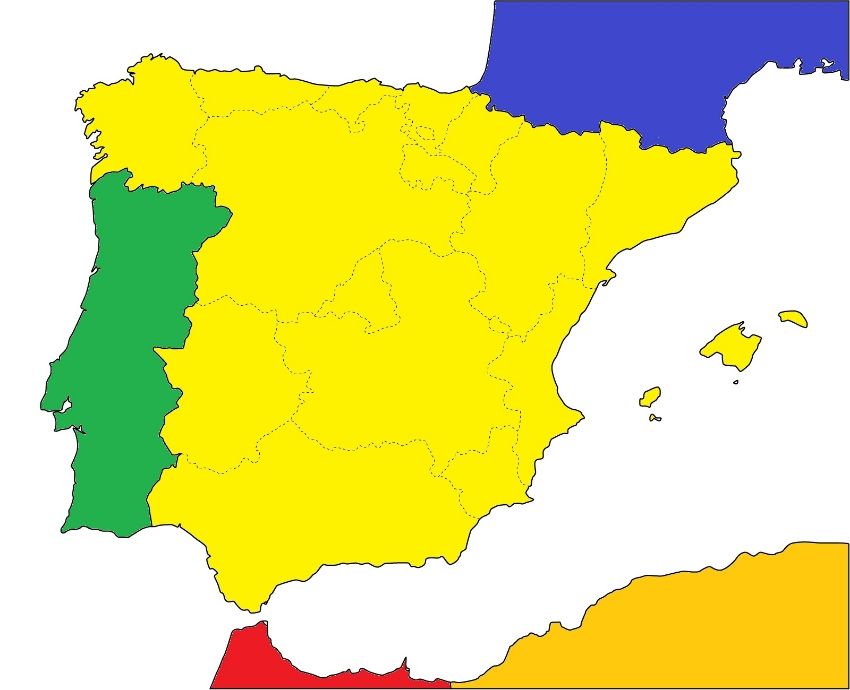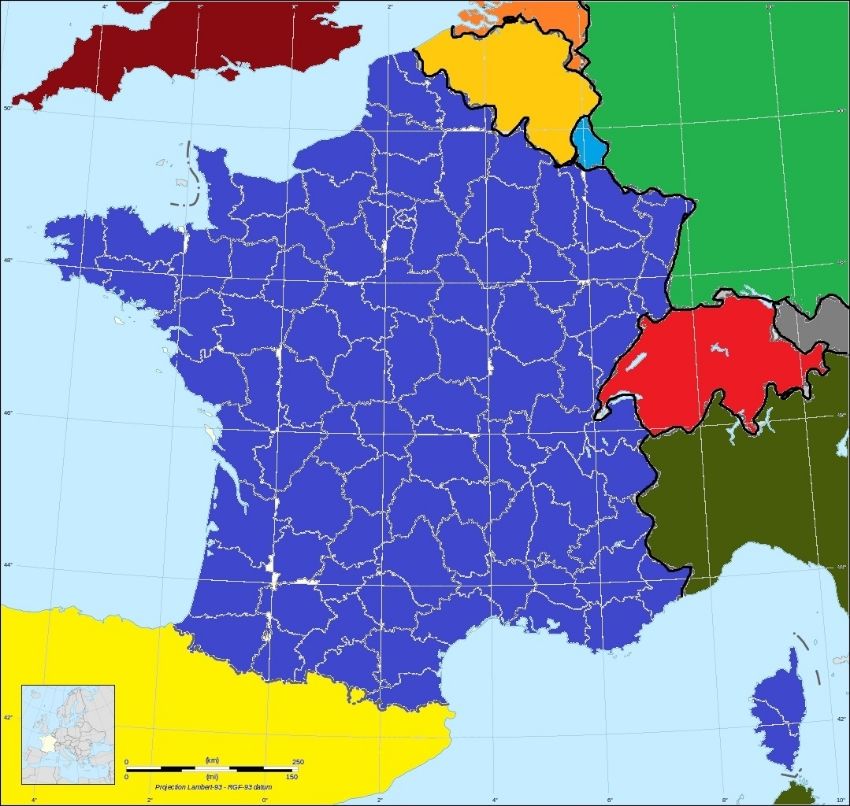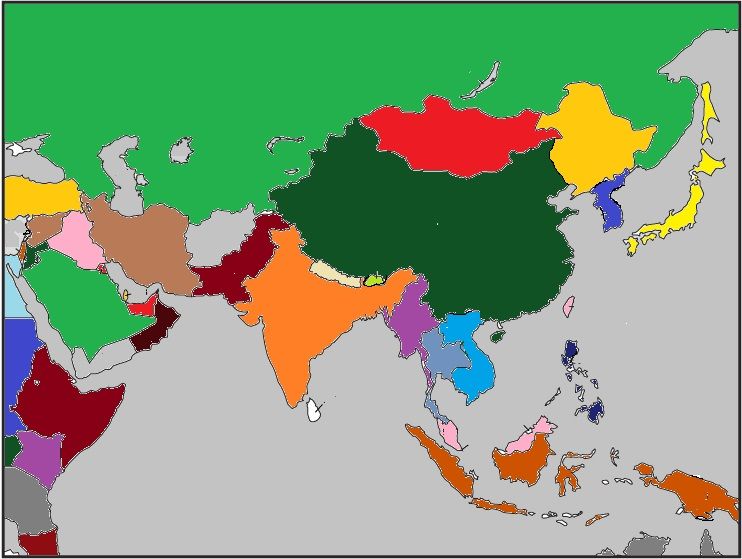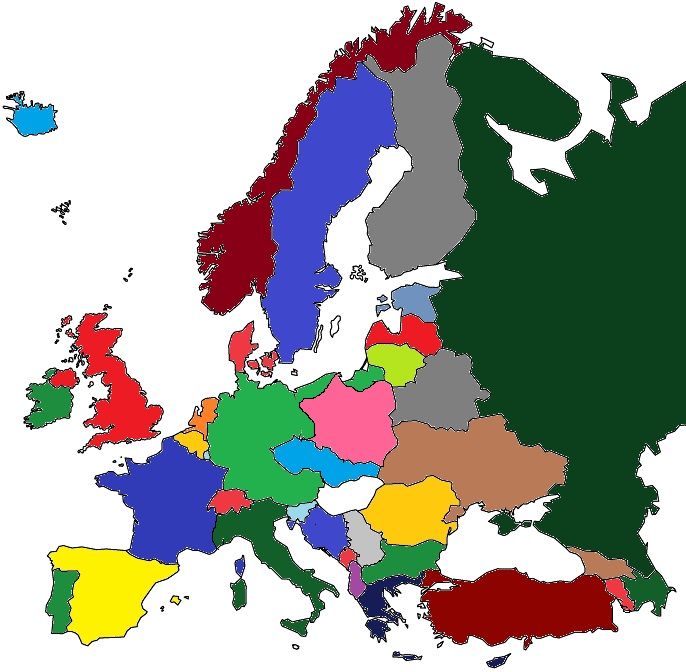WARNING: Text Heavy update. Somehow fitting the last update is also the single longest one by far.
Warriors of the North said:
As the year of 1948 began in Europe, a new nation was born. The Swedish Occupation Zone, encompassing pre-war Germany and Austria, had been designed with the end-goal of setting up a stable government in the area. The intention was never to rule over the German territories for longer than a few years, and almost four years after the War of Liberation, the Zone had finally borne fruit.
There were many, many debates on how to divide the Zone. Some hardliners supported splitting Germany into its constituent parts...a reborn Kingdom of Prussia, Bavaria, unified Confederation for the remaining German territory, and an independent Austria. This was a minority, seen as far too harsh and likely to create a lasting resentment in the split nations. Another proposed option was setting up smaller occupation zones...Sweden would control the Baltic coast down to Berlin, while Britain and France would occupy the rest. The problem with this was that Germany had already been rebuilt...further occupation would be counterproductive. Sweden had only justified the invasion by removing the Nazi leadership. Continuing the occupation any further would ruin the point.
The final two options came down to a simple question: did Austria belong as part of Germany, or independent? There were valid arguments on both sides of the issue. The unification between Germany and Austria had been a peaceful affair, with the approval of both nation's previous leaders. Unlike Poland, no war had been fought. Unlike Czechoslovakia, both governments had been in full support of the unification. On the other side of the argument, there were worries that a unified German-Austrian state would be too powerful. And that those Austrians who
were in favor of having their own nation would be oppressed.
In the end, the solution was similar to Bosnia-Croatia, if in reverse. A Federal Republic of Germany would be formed, along with an independent Austrian Republic. The two nations would hold a plebiscite, overseen by the UN, in one decade. If they chose to reunite, they would be allowed to without interference. In the end, the Germanic states made the choice to peacefully form a joint federation, the Austro-German Republic, in 1958. This nation became the cornerstone of central European politics, though the leadership still bore a distinctly Scandinavian style, well into the tail-end of the 20th century.
Yes, that really is what post-war Italy ended up as...
Further south, the last major Axis power to fall was Italy. The Italians were not as lucky as the Germans, or even the Japanese. Instead of being restored with their own government like the former two, Italy remained under occupation into the first years of the 1950s. Due to a late American entry into the war, the occupation zones were somewhat odd. The area around Milan and Genoa was British, where their original invasion force had been pushed back. The Americans had landed further to the south, quickly overtaking all of Italy down to Naples. Rome herself fell within a month of the Yanks arriving, the masses of men overwhelming weary Italian defenders.
Due to their contribution, Central and Eastern Italy, from Trieste to Naples, became the American Zone. The remainder of the 'boot', in addition to Sicily and Sardinia (the latter of which had been occupied for years), defaulted to British occupation due to their longer period in the war. In addition, all of the Italian colonies went to King Edward, including Ethiopia and the former Belgian Congo. Libya declared independence in the chaos of the Italian surrender, something supported by the UN, even though it forced British troops to pull out of their hard won gains on the Egyptian/Libyan border.
Ethiopia would regain their own independence soon after the war ended, in addition to gaining a coastline by the British forces giving them Eritrea and Somalia...something the Brits didn't care to occupy. The same went for the former French port in the area that the Swedes didn't desire to rule. Italy was a harder subject, where debates ran up and down both occupation zones on what the nation would follow. The divide was primarily on if Italy would remain a Kingdom, or if they would become a Republic. Debates raged for years, until the UN stepped in and held a referendum, by British request (the Americans were firmly in support of a Republic, unsurprisingly). The result was a nearly even split, with a small majority in favor of the Kingdom.
However, the former King Vittorio Emanuele III was too closely tied to Mussolini to be considered unbiased. Thus, he abdicated in favor of his son, who was crowned as Umberto II in May 1951 and enjoyed a long reign as the Kingdom of Italy rebuilt itself from the ground up into a peaceful state.
Key:
Blue: Republic of Slovenia
Brown: Hungarian People's Republic/Republic of Hungary (post-'Fall of Communism')
Green: Kingdom of Italy
Light Blue: Kingdom of Bosnia-Croatia
Gray: Republic of Serbia
Red: Republic of Montenegro
Purple: Kingdom of Albania
Dark Green: Kingdom of Bulgaria
Orange: Socialist Republic of Romania/Republic of Romania (post-'Fall of Communism')
Dark Blue: Kingdom of Greece
Dark Red: Democratic Republic of Turkey
Somewhat ironically considering most predictions to the contrary, the Balkans settled down
relatively easily after the war. With Italy occupied, the long-running war against Greece finally came to an end, and King Zog was reinstated in Albania. The Bulgarians had never entered the war apart from a formality in supporting their Italian allies when the Americans entered the war. As a result, Tsar Boris' nation escaped the worst of the long wars, emerging intact, and indeed gaining some territory at the expense of Yugoslavia/Serbia. Serbian Macedonia had been given to the Bulgarians by the German-supported puppet government, and has remained as part of the Kingdom to this day.
Further south, the Greeks were bloodied and exhausted from the long war with the Italians. The Kingdom had never been particularly stable, and with an openly hostile Bulgaria to the north, and only the small Aegean separating them from an openly Communist Turkey, the Greeks descended into fierce civil wars in the early '50s. Monarchists, Republicans and various shades of Socialist all fought for control of the unstable nation, eventually forcing a UN mission to enter the country to stabilize the situation. Primarily Swedish and Finnish troops, the mission was based in Athens and Thessaloniki, and allowed those two cities to become safe havens in the unrest gripping the rest of Greece. King George II had died in late 1947, leaving Paul II as the leader of the Monarchist forces. Markos Vafiadis lead the Communists, while the Republicans had no set leadership.
All three of these factions had support of large portions of the Greek populace, and as a result violence was common between the disunited groups. Paul was a more moderate leader than George had been, and because of this he had the support of the UN. While the war would rage until 1954, eventually Greece was back under the control of the Monarchy. Large Swedish garrisons remain based on Rhodes, however, should they ever be needed. In addition, Greece became the center of the Balkan Block, an economic alliance with Bulgaria (the nation had loosened its isolation after Boris' death in the late '50s), the Yugoslav successor states, and Albania.
To the East of Greece, the Turkish people lived in a nation ruled by Soviet supported communists. The proud Turks were not easily cowed however, and revolts plagued the nation well into the 1970s. The infamous Sea of Marmara Incident, where a Greek destroyer was fired upon by Turkish rebels posing as government troops, sparked a war between Greece and Turkey during that decade; a war that quickly became a proxy war between the UN and the Comintern. The Greco-Turkish War was a violent affair, both sides fighting the other with everything they had. After two years of hard fighting, a truce was declared, with the only result being the downfall of the Soviet-backed Turkish leadership. The new leaders kept the form of the Democratic Republic, but they adopted a strict neutrality.
The former Yugoslav states proved more stable than their Greco/Turkish neighbors. Montengro and Slovenia had peaceful years, their mostly united populations allowing the two states to prosper despite the instability gripping Greece and Turkey. Serbia had issues with Albania and the region of Kosovo however. These issues are still present, if simmering beneath the surface.
The jewel of the Balkans was Bosnia-Croatia however. This nation, expected to disintegrate come the plebiscite, elected to stay united. The Croats and Bosnians, perhaps cowed by the large concentrations of Soviet/Soviet-backed troops along their border had worked closely with each other during the first decade of the new nation, preparing it for a potential war. This unity stretched into the government, where the nation was governed by both Croats and Bosnians. Because of that, the nation's people elected to remain united. As the largest of the Yugoslav successor states, Bosnia-Croatia can be considered one of the great success stories of the post-war world.
The Iberian Peninsula remained as the one part of Europe to never suffer an occupation. The Kingdom of Spain and Republic of Portugal were both far from free democracies, but the UN had no options to intervene, and thus their governments continued. Upon the deaths of Sanjuro and Salazar, however, the nations began to reform somewhat. Portugal gave their African colonies independence and returned most of their other colonies to the nations they were inside (Goa to India and Macau to China for instance). The Kingdom of Spain reformed to a more democratic system, but issues remained. Despite never having an occupation, the state had never fully recovered from the Civil War. Because of this, Spain is possibly the poorest nation in modern Europe, despite UN attempts to kickstart the economy.
If there were any losers from the long period of warfare, it would be the westernmost European nations. Luxembourg and Switzerland remained neutral and prospered from trade with the Austro-German Republic in the post-war days. The same could not be said of Belgium, France, and the Netherlands. All three nations had been occupied by the Third Reich, and all three had lost their colonies. French North Africa was now the independent (if in the Swedish Sphere of Influence) states of Algeria, Morocco and Tunisia. The Belgian Congo was administered by Great Britain, while the Dutch East Indies were slowly being handed over by the Americans to the newly independent Indonesia. The aftereffects were different in each of the nations in question.
Belgium got off the easiest by far. No revolts plagued the nation, and the British allowed Belgian companies the rights to exploit the Congo, even if they wouldn't return the territory. Because of this, the Belgians recovered the fastest, though they are still relatively weak economically to this day.
France continued to suffer, even with the restoration of the Republic. Revolts and food strikes continued to plague the countryside, making travel across the nation a risky journey. The French leadership and military were mostly powerless to stop these revolts, resulting in the British occupying Normandy and Brittany for several years after the War ended, while Germany (with Swedish backing) occupied Alsace-Lorraine. The French Republic protested these moves, but there was little they could realistically do. Communist guerrillas and supporters of the defunct French State continued to riot and occupy large swathes of the country for years after the war ended. Only the British and German-Swedish occupation zones prospered in relative safety, until the French finally recovered in the early '60s and the zones were returned. To this day, however, Alsace-Lorraine, Brittany and Normandy remain the most prosperous parts of France.
The Netherlands suffered the most of all the nations in Western Europe. The loss of the East Indies crippled the nation's economy, forcing the Dutch to refocus all their industry into their small nation. The result was a wave of revolts from 'oppressed workers'. The only large scale Communist revolt in Western Europe, the Dutch Civil War continued for years on end, as wary Belgian and German troops watched from over the border. Most of the nation was overrun by rebels at one point or another, with the government struggling to maintain control. Eventually, the proud Dutch called in the UN for support, and Austro-German troops marched into the Netherlands to restore order. While the Civil War ended in government 'victory' the Netherlands continue to struggle to rebuild their nation to its past glories.
Asia remains much the same in the modern day as it did after the defeat of Japan. Remnants of the Colonial Movement are still seen in the borders of some of the nations, most notably Indochina and Indonesia. The former retained control of all the territory France had once held, despite attempts to form an independent Laos or Cambodia. The dictatorship in power stomps down hard on any independence movements before they can any real traction. Indonesia is a nation formed entirely due to let over colonial institutions. The Dutch infrastructure and governing style remain in use, though the addition of Papua New Guinea from Australia gives the nation a bit more territory than the Dutch had held.
The Philippines, Siam, Burma, Malaya, Afghanistan, and Persia all remain much the same as they had been in the late 1940s, though the governments of each had gone through numerous rebellions and coups. Most notable of these was the establishment of the Islamic Republic of Iran, when Reza Shah Pahlavi was dethroned in the early '60s. Attempts have been made to restore the Shahs (either Pahlavi or Qajar) to power ever since, notably by the Americans. These have come to nothing.
Perhaps the largest change in a former Colony is India, however. The Indian Sub-Continent, formerly ruled entirely by a British-backed Indian state (with Nepal and Bhutan nominally independent), was now split between India and the nation of Pakistan. These states were split for the simple reason that the populations of either state did not like the other. While splitting them avoided violence inside the nations, at least from that cause, it lead to many Indo-Pakistani Wars. Nuclear Weapons were eventually developed by both states, making an already tense situation far worse.
In fact, some believed it was only the Republic of China's threats that kept nukes from flying. This possibility is debatable, but the fact remained that the Chinese were the superpower of East Asia. Wang Jingwei's death opened the path for the Republic to modernize and become more democratic, something his successors pursued vigorously, to catch up to the Japanese. With Xinjiang rejoining the Republic in the early '50s, the nation controlled most of historic China. This provided the Republic with a population that exceeded any other nation, with the notable exception of India.
The industry of China lagged behind for most of the later 20th century however. For Pu Yi's Empire of Manchuria refused to rejoin China. The restored Qing Dynasty remains in power in Manchuria to this day, a nation struggling to keep pace with her neighbors.
The last notable power in Asia is Japan. Allowed to retain their monarchy by the Americans, the Japanese embraced Democracy while keeping Hirohito as a figurehead ruler. Many anticipated that without Korea or Formosa (now the Kingdom of Taiwan), that the Japanese would falter due to lack of resources. This couldn't be farther from the truth. The Japanese may lack in military might or territory, but they make up for it with a technology boom rivaled only by nearby Korea. It is not a stretch to say the Japanese are the most advanced power in Asia.
The Americas saw no combat hit their shores, and as such, never felt the brutal sting of occupation. As a result, the economies of most American states prospered in the post-war world. To be sure, there were exceptions to the rule. Mexico and several South American states struggled to maintain their economies. This was notable in UN Security Council member Brazil, where Vargas was otherthrown several years after the war. The Brazilians have the potential to dominate South America with Argentina, but they have yet to develop this potential properly.
The single largest change in the Americas was by far the United States. Isolationist until the very end of the war, the United States benefited the most from the post-war world. The economy boomed, as the military financed the 'Marshall Plan'. The Americans were vehemently Anti-Communist, and made no efforts to hide this. Sweden benefited from the economic aid, but so too did the rest of Europe. The United States continues to be the main power in the world, for better or worse.
This is due in large part to their deployment of the first Atomic weapons in the Taiwan Crisis, dropping a weapon codenamed 'Little Boy' on Nanjing to force Jingwei to renounce his claims on Taiwan. Ever since, the US has used the threat of their nuclear arsenal to keep other nations in line when they felt their interests were threatened.
And finally, we return to Sweden. The nation that had changed the world, perhaps for the better. After the War of Liberation, Sweden returned to its historic neutrality--albeit with the caveat that their troops made up the majority of any UN peace-keeping mission. The Swedish Military continued to grow and improve in technology, becoming the second nation in Europe after the Soviet Union to develop nuclear weapons. The Air Force was responsible for use and deployment of these weapons, while the Army and Navy stayed far more traditional. The Army developed new tanks and helicopters, while the Navy continued to build cruisers...with the notable exception of four ships. As part of the reparations at the end of the War of Liberation, Sweden had taken the incomplete hulls of the last ships built for the Kreigsmarine. KMS
Scharnhorst,
Gneisenau,
Von der Tann, and
Graf Zeppelin. The former three were battlecruisers, the last a carrier.
With these ships (and their successors, designed and built in Swedish yards) the Navy continued to keep the coasts secure from the roving Red Navy, expanded to ludicrous heights in the Cold War. As it turned out, the Swedes never had to use the vessels...as in 1985, the Soviet Union collapsed under its own weight. The breakdown of Communism (with the notable exception of Turkey), lead to a subsequent downsizing in the Swedish Military.
But to this day, the Swedish Military remains the largest in the Nordic League. And the Swedish government maintain their permanent seat on the Security Council, along with Britain, the Republic of China, Brazil, and the United States. Peaceful or not, the Swedes are always ready to respond to aggression that threatens their sphere of influence...
-0-0-0-0-0-0-0-0-0-0-0-0-0-0-0-0-
Excessive? Probably, but
darn that was fun to write!

I hope everyone enjoyed the AAR from start to finish!


